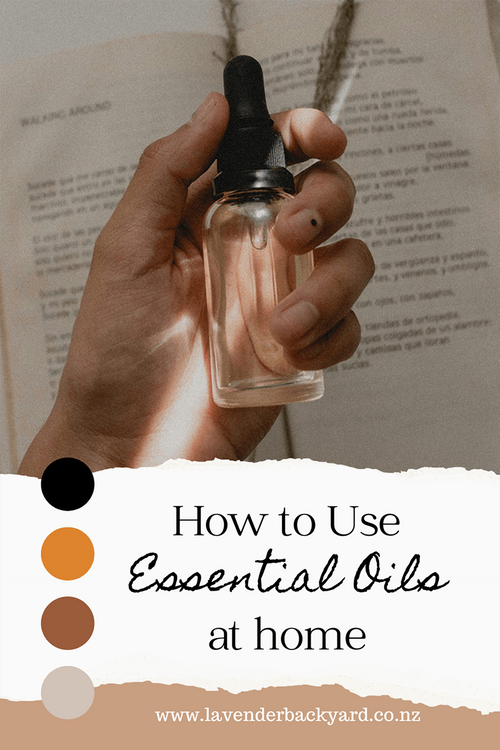Gardening Tips | How to Prune Lavender Plant
Share

✂️ Why Pruning is Essential for Lavender
Pruning lavender during autumn is key to maintaining a healthy and vibrant plant. Here's why it’s so important:
1. Promotes Growth
Pruning encourages new growth, helping to keep your lavender plants healthy. By removing spent flowers and dead stems, the plant redirects its energy into producing fresh shoots and foliage.
2. Prevents Disease
Autumn pruning removes diseased or damaged parts of the plant, reducing the risk of fungal infections. It also improves air circulation, which helps prevent moisture buildup—a common cause of disease.
3. Shapes the Plant
Pruning keeps the lavender plant looking neat and well-shaped. Regular autumn trimming allows it to develop a strong structure before winter, maintaining the plant’s size and form.
4. Prepares for Winter
By trimming before winter, you prevent the accumulation of dead foliage, which can harbor pests and diseases. It also reduces the weight on branches, protecting them from potential snow or ice damage.

⏳ When to Prune Lavender
The best time to prune lavender is in the late summer or early autumn, just after it has finished flowering. Pruning during this time will help to promote bushier growth and prevent the plant from becoming too woody. Avoid pruning lavender in winter or early spring, as this can damage the new growth and reduce the number of flowers the plant produces.

🌿 How to Prune Your Lavender Plant: A Step-by-Step Guide
Follow these simple steps to ensure your lavender remains healthy and beautiful:
- Prune One-Third of the Plant: Trim about one-third of the plant, reshaping it into a neat mound. For leggy varieties, focus on keeping them well-shaped.
- Avoid Cutting Into Woody Stems: Never prune down to the woody base, as this can damage the plant and hinder regrowth.
- Prune Timing: Prune in late summer after blooming to encourage new growth before winter.
- Remove Dead Flowers: Cut off dead flowers just above the first set of leaves. This encourages more blooms and helps the plant conserve energy.
- Trim Back Stems: Cut the stems by one-third to one-half of their length, always above a set of leaves.
- Remove Dead or Damaged Stems: Trim any dead or damaged stems to prevent disease spread.
- Don’t Over-Prune: Avoid cutting more than one-third of the plant at a time to prevent weakening the lavender.
Following these steps will keep your lavender plant healthy and productive for years to come.

Blue Line: We prune our lavender in early April (New Zealand autumn), trimming back all shoots by at least one-third.
Red Line: Never cut down to the woody base, as this can damage the plant.
Lavender Care: Fertilising, Pests, and Disease Prevention
Fertilising Lavender
For healthy lavender growth, start by placing a slow-release fertiliser in the planting hole when first planting. To maintain optimal growth, apply an all-purpose fertiliser in early spring and again in late summer to support blooming and plant health.
Common Pests and Diseases
Lavender is naturally resistant to most pests and diseases, but a few issues can arise.
Root Rot
One of the most common problems lavender faces is root rot, usually caused by poor drainage. Prevent this by ensuring well-drained soil and avoiding excessive watering.
Spittle Bug
The Spittle Bug appears in early summer, leaving unsightly foamy spots on the plant. While it does not cause significant harm, it can be removed by:
- Hosing off with a strong stream of water
- Manually removing the insects from the plant
Garden Weevil
The Garden Weevil feeds on lavender stems, particularly the mature flower heads, causing them to wither and dry out. This pest is challenging to control organically, but potential solutions include:
- Using a contact pesticide for effective removal
- Applying pyrethrum oil to help reduce damage naturally
Frequently Asked Questions About Pruning Lavender
-
Can I Cut Lavender Back to the Ground?
No, never cut lavender back to the ground. Lavender won’t bloom again or develop new growth on leafless wood. Always avoid cutting back to the base.
-
Does Lavender Regrow After Pruning?
Yes, lavender regrows in spring, but proper pruning is key to healthy regrowth and blooming. Don’t cut it to the ground, as it won’t bloom on leafless wood. Instead, prune selectively, leaving green foliage to encourage new growth.
-
Does Lavender Bloom All Year Round?
No, most lavender varieties bloom from spring to summer, but the exact timing varies depending on the variety. Some types start flowering earlier in spring, while others continue into late summer. However, a few varieties, such as Lavandula dentata, Lavandula dentata Monet, Lavandula pinnata Sidonie, and the Lavandula Leigh series, can flower year-round.
-
How Long Do Lavender Plants Last?
Lavender plants can live for around 10 years with proper care. Regular pruning, especially in autumn, supports their health and encourages abundant blooms year after year.
☀️ Healthy Lavender for High-Quality Essential Oil
Healthy lavender plants produce high-quality lavender essential oil. Try our award-winning Lavender Essential Oil—its strong, sweet aroma will make you fall in love with it!
As a lavender farm in New Zealand, we grow Lavandula x Intermedia for essential oil distillation. Want to learn more about our farm? Click here to discover our fields and process!
🌿 Our Best-Selling Lavender Products:
- Lavender Essential Oil – Pure, calming, and versatile
- Lavender Sleep Spray – A natural sleep aid for restful nights
- Lavender Bath Salts – Ultimate relaxation in every soak


